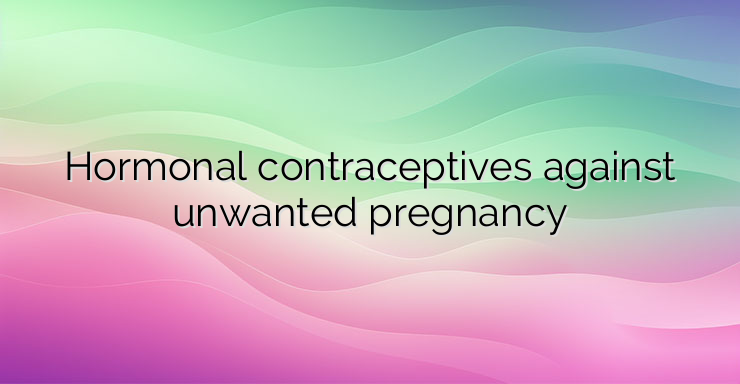Through hormonal contraceptives we achieve pregnancy planning and control. Hormonal preparations are laboratory synthesized hormones – estrogens and progestogens. They are widespread, about 25-30% of women in Europe and North America use them to prevent unwanted pregnancy. The use of hormonal preparations as a method of contraception provides relatively high efficiency in preventing unwanted pregnancy. Pearl index for this method of contraception is about 0.02 – 0.5. Estrogens and progesterone are steroid hormones that are involved in controlling the changes in the female body during a woman’s monthly cycle. Their synthesis is under the control of hormones that are released by the hypothalamus and pituitary gland. Taking hormonal preparations – synthetic analogues of estrogens and progestagens, leads to a significant reduction in the synthesis of the follicle-stimulating hormone – FSH and the luteinizing hormone – LH, which are released by the pituitary gland. The effect of hormonal contraceptives is the result of the low levels of the two hormones – FSH and LH. As a result, the growth and maturation of the follicles in the ovaries is suppressed and ovulation is interrupted. Hormonal preparations, in addition to affecting hormonal regulation, also affect the endometrium of the uterus and the consistency of the cervical mucus. In the case of fertilization of an egg, it cannot be absorbed and retained in the endometrium. Under the action of hormonal contraceptives, it thins. Cervical mucus becomes thick and its quantity decreases. This makes it difficult for sperm to pass through and reach the fallopian tubes. Oral hormonal contraceptives are: Combined preparations – depending on the ratio of the two hormones in the individual tablets, they are divided into monophasic and phasic – biphasic, triphasic. Progestagen preparations – containing only progestagen. Monophasic combined hormonal contraceptives contain both hormones in the same dose in all tablets. Phase combined hormonal contraceptives also contain both hormones, but their amount varies in each tablet. Thus, the ratio between the two hormones is also different. With them, the dose of hormones in the tablets changes as their concentration changes during the woman’s monthly cycle. NEWS_MORE_BOX With some combined hormonal contraceptives, the tablets in the first half of the cycle contain only estrogens. After 14-16 days, they become combined, both hormones are involved in their composition. Progesterone preparations contain only progestogen, which is taken in a low dose daily. Their effectiveness is less than that of combined hormonal preparations. The use of oral hormonal contraceptives is also associated with the occurrence of side effects as a result of the exogenous hormonal import into the body. Nausea and vomiting can often occur in the first few months after starting hormone preparations.If vomiting is frequent and abundant, this may disrupt the absorption of the preparation and lead to a decrease in its contraceptive effectiveness. During the first months, women may experience light spotting. After a longer intake of hormonal contraceptives, menstruation in some women can reduce its duration. Hormonal contraceptives are not taken in the presence of blood clotting disorders. Women with thrombophlebitis, cardiovascular diseases should not take hormonal preparations, as well as patients with cerebrovascular disorders or the presence of valvular heart diseases. Another contraindication for their intake is the presence of liver diseases and carcinoma of the mammary gland.


Leave a Reply